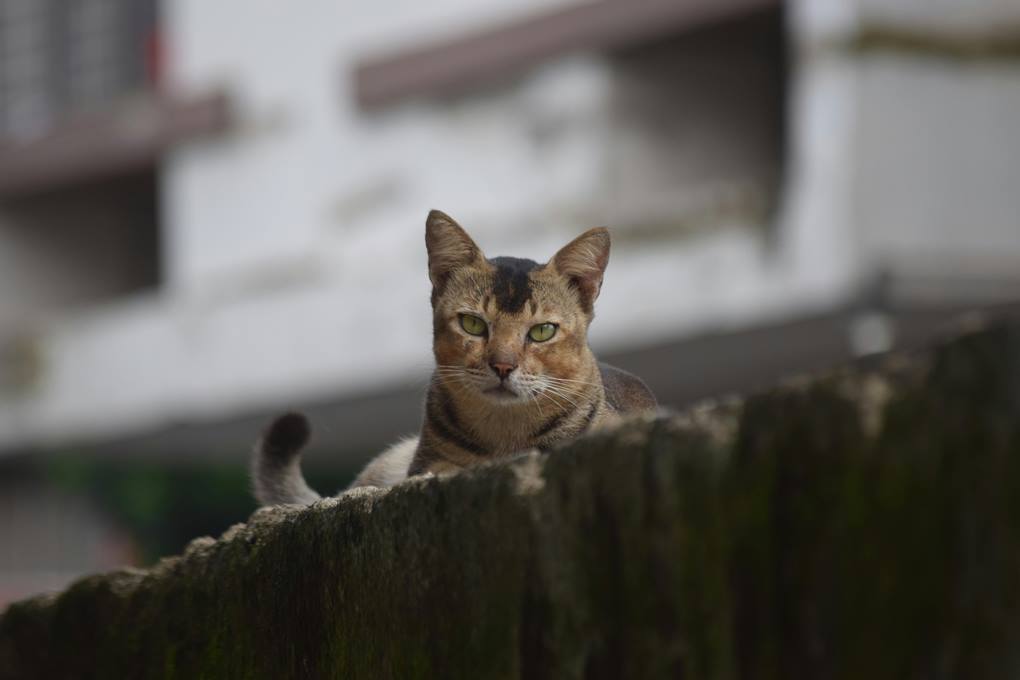In this Article
Capturing the perfect photo of your feline friend can be both rewarding and challenging. Cats are unpredictable, curious, and often uninterested in posing for the camera. But with the right techniques, patience, and creativity, you can create stunning, Instagram-worthy cat photos using a smartphone or dedicated camera. This guide provides expert tips and tricks to help you master cat photography, whether you're a beginner or a seasoned photographer.
Understand your cat's behavior
Cats have unique personalities, and understanding your cat's habits is key to capturing authentic moments. Pay attention to when your cat is most active, playful, or relaxed. For example, some cats are more active in the morning, while others are more cuddly in the evening. Timing your shoot to capture these moments increases the likelihood of getting natural, engaging shots.
Watch your cat's body language. A flicking tail may indicate excitement, while a slow blink may indicate calm. Avoid forcing your cat into a pose, as this can lead to stress and unnatural photos. Instead, let her mood guide the session.
Tip: Use familiar surroundings
Cats are most comfortable in familiar places. Photograph them in their favorite places - on a windowsill, on a scratching post, or curled up on a cozy blanket. This not only makes them look relaxed, but also adds context to the photo and tells a story about their personality.
Mastering lighting for stunning cat photos
Lighting is one of the most important elements in photography, and cat photography is no exception. The right light can enhance the texture of your cat's fur, highlight her eyes, and create a captivating mood.
Natural Light
Natural light is ideal for cat photography because it's soft and flattering. Position your cat near a window or in a well-lit room to capture her features without harsh shadows. Early morning or late afternoon light, often called the "golden hour," provides a warm, diffused glow that makes fur and eyes pop.
Avoid direct sunlight as it can cause overexposed spots or make your cat squint. If the light is too strong, use translucent curtains to diffuse it.
Artificial Light
When natural light isn't available, artificial lighting can work well. Use a softbox or ring light for even lighting. Avoid using your camera's built-in flash, as it can scare your cat and cause red-eye or unnatural reflections in her eyes. If you must use a flash, bounce it off a wall or ceiling to soften the effect.
Tip: Highlight the eyes
A cat's eyes are often the focal point of a great photo. Use light to create a "catchlight"-a small reflection in her eyes that adds sparkle and depth. Position your cat so that the light source naturally reflects off her pupils.
Choosing the Right Equipment
You don't need professional equipment to take great cat photos, but understanding your tools can improve your results.
Smartphones
Modern smartphones have powerful cameras that rival entry-level DSLRs. They're also less intimidating to cats than bulky cameras. Use portrait mode to create a blurred background (bokeh) that draws attention to your cat. Many smartphones also offer manual settings to adjust exposure, focus, and white balance for more control.
For cameras
If you're using a DSLR or mirrorless camera, a wide aperture lens (such as f/1.8 or f/2.8) is ideal for creating a shallow depth of field. This will blur the background and keep your cat in focus. A 50mm prime lens is a great choice for portraits, while a 35mm lens works well for environmental shots.
Accessories
- Tripod: Useful for low-light shots or when you want to keep your hands free to interact with your cat.
- Remote Shutter: Allows you to trigger the camera without startling your cat.
- Reflectors: Inexpensive tools for bouncing light and filling in shadows.
Tip: Keep it simple
Don't overwhelm yourself with gear. Start with what you have, whether it's a smartphone or a basic camera, and focus on composition and timing.
Composition Techniques for Stunning Photos
Composition is the art of arranging the elements in your frame to create a visually appealing image. Here are some techniques to help your cat photos stand out:
Rule of Thirds
Imagine that your picture is divided into a 3x3 grid. Place your cat's face or eyes along one of the grid lines or at an intersection rather than in the middle. This creates a more balanced, dynamic image.
Frame within a frame
Use doorways, windows, or furniture to frame your cat. This draws the viewer's eye to your subject and adds depth to the photo.
Negative Space
Include blank space around your cat to emphasize her presence. For example, photograph her on a plain wall or wide open floor to create a minimalist, striking image.
Get on her level
Photograph your cat at eye level to capture her perspective. This makes the viewer feel connected to the cat and highlights her expressions.
Tip: Experiment with angles
Don't stick to one angle. Try shooting from above for a playful vibe, or from below to make your cat look majestic. Unique angles can reveal new aspects of her personality.
Capture action shots
Cats are masters of movement, from jumping to pouncing to chasing toys. Action shots can capture their athleticism and energy.
Use burst mode
Most smartphones and cameras have a burst mode that takes multiple shots in rapid succession. This is perfect for capturing fleeting moments, like a mid-air jump or a playful slap.
Fast shutter speed
For cameras, set a fast shutter speed (such as 1/500th of a second or faster) to freeze motion. In low light, increase the ISO to avoid blurry images, but be aware of graininess.
Anticipate movement
Learn to anticipate your cat's actions. If they're eyeing a toy, be ready to shoot when they pounce. Keep your camera focused on the area where you expect movement.
Tip: Use toys and treats
Entice your cat with a feather wand, laser pointer, or treat to encourage dynamic poses. Be patient, as cats may take some time to engage.
Edit for perfection
Editing can turn a good photo into a great one. Use editing apps or software to enhance your cat photos without going overboard.
Basic adjustments
- Exposure and Contrast: Adjust brightness and contrast to make your cat stand out.
- Sharpness: Enhance detail in fur and eyes.
- White Balance: Correct color tones for a natural look.
Popular editing tools
- Smartphone apps: Snapseed, Lightroom Mobile, or VSCO offer easy-to-use editing options.
- Desktop software: Adobe Lightroom and Photoshop offer advanced control for camera users.
Tip: Keep it natural
Avoid heavy filters that distort your cat's appearance. Subtle edits preserve her unique features and keep the photo authentic.
Keeping your cat engaged during the shoot
Cats are not natural models, so you need to keep them interested and comfortable.
Use sounds
Cats are drawn to unusual sounds. Crinkle paper, shake a toy, or use a pet-specific sound app to get their attention. Avoid loud or startling noises that may frighten them.
Reward them
Offer treats or affection to reinforce positive behavior. A small reward after a successful shot can make future sessions easier.
Keep sessions short
Cats have short attention spans. Aim for 5-10 minute sessions to avoid overwhelming them. If they lose interest, try again later.
Tip: Blend into the background
Move slowly and avoid sudden movements. Allow your cat to become accustomed to the presence of the camera before filming.
Creative Ideas for Instagram-worthy Photos
Want your cat photos to go viral? Try these creative ideas:
Themed photos
Dress up your cat (if he's comfortable) or create seasonal sets, like a pumpkin patch for fall or a cozy blanket fort for winter. Keep props to a minimum to avoid distractions.
Storytelling
Take a series of photos that tell a story, such as your cat exploring a new toy or lounging through the day. Post them as a carousel on social media for engagement.
Macro shots
Zoom in on details like whiskers, paws, or eyes for intimate, striking images. A smartphone macro lens attachment can help achieve this effect.
Black & White
Convert photos to black and white for a timeless, artistic look. This works especially well for dramatic portraits.
Troubleshooting common challenges
Blurry photos
- Increase shutter speed or use burst mode.
- Tap to focus on smartphones or manually adjust focus on cameras.
- Stabilize your device with a tripod or by placing it on a surface.
Uncooperative cats
- Be patient and work around her schedule.
- Use distractions such as toys or treats to divert her attention.
- Take breaks if they seem stressed.
Cluttered backgrounds
- Choose plain or neutral backgrounds.
- Use a wide aperture to blur distractions.
- Crop or trim unwanted elements in post-production.
Build your portfolio or social media presence
If you're passionate about cat photography, consider sharing your work online. Platforms like Instagram and TikTok are perfect for showcasing your cat's charm.
Consistency.
Post regularly and use a consistent editorial style to build a recognizable brand. Experiment with hashtags like #CatPhotography, #CatLovers, and #MeowMonday to reach a wider audience.
Engage
Interact with other pet photographers and cat lovers. Respond to comments and collaborate on challenges or giveaways to grow your following.
Tip: Showcase variety
Mix up your content with portraits, action shots, and candid moments. Keep your feed fresh and engaging.
Conclusion
Cat photography is a wonderful blend of patience, creativity, and technical skill. By understanding your cat's behavior, mastering lighting and composition, and using the right tools, you can capture stunning photos that celebrate their unique personalities. Whether you're snapping pictures for fun or aiming for a viral Instagram post, these tips will help you get purr-fect shots every time. Grab your camera or smartphone and start capturing your feline muse today!

